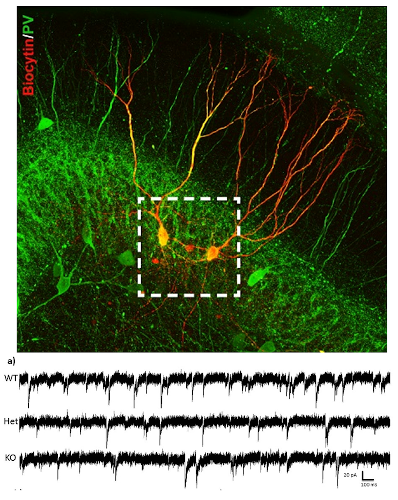The high comorbidity of epilepsy and autism spectrum disorders (ASD) has been suggested to result from shared pathological mechanisms involving abnormal development of inhibitory microcircuits. Our ongoing studies test the fundamental premise that deficits in establishment of normal inhibitory neuron networks during development underlie the shared outcome of epilepsy and autism. In collaboration with Dr. Tracy Tran (RU-Newark), we have developed a novel genetic model of autism-epilepsy syndrome by selectively deleting Neuropilin2 (Nrp2) a molecular cue important for establishing neuronal connections during development in inhibitory neuron precursors. We are investigating the evolution of structural and functional changes to inhibitory neuron networks in to better understand the abnormal circuit features shared by both disorders and enable future therapeutic interventions. These studies will develop mechanistic insights into cellular, molecular, genetic and systems-level changes in interneuron circuits underlying childhood epilepsy-autism comorbidity.
Past and Current Funding: Rutgers Brain Health Institute Pilot Grant(s).

